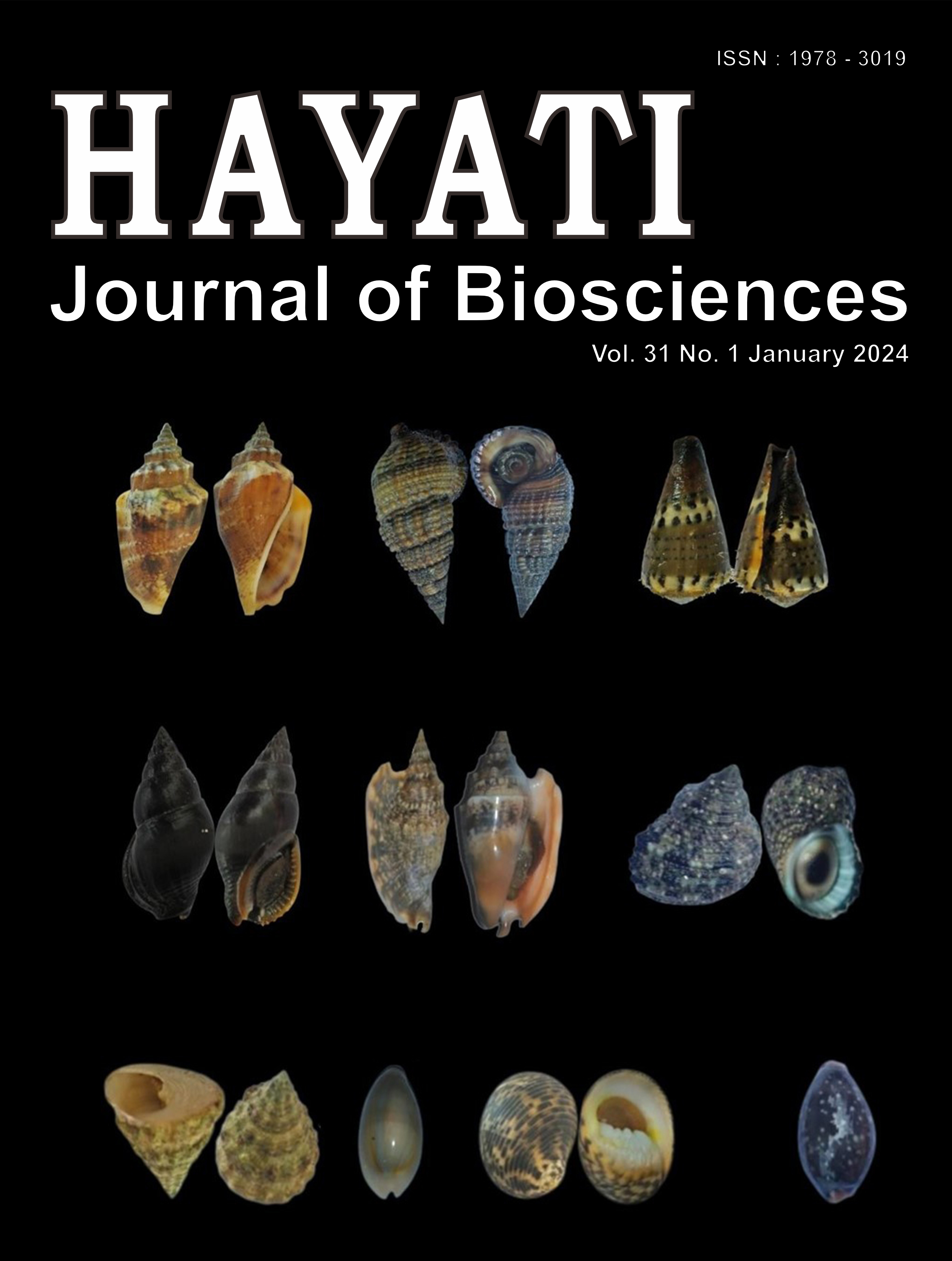Effect of Averrhoa bilimbi Leaf Extract on Blood Glucose Level, Hepatosomatic Index (HSI), and Liver Histology of Diabetic Mice
Abstract
Averrhoa bilimbi leaf extract (BLE) contains high antioxidant levels. Antioxidants can suppress reactive oxygen species produced during hyperglycemic conditions in diabetes mellitus (DM), which cause damage to liver tissue. This study aimed to determine the BLE effect on fasting blood glucose (FBG), Hepatosomatic Index (HSI), and liver tissue damage. We used 24 mice in 6 different groups, divided by N (normal), K- (DM), K+ (DM+glibenclamide 0.013mg/20gBW), E1 (DM+ extract 6.3mg/20gBW), E2 (DM+ extract 8.4mg/20gBW), and E3 (DM + extract 10.5mg/20gBW). We used an alloxan dose of 120mg/kgBW to induce the DM and then treated with BLE for 14 days. We measured the fasting blood glucose using a glucometer. In addition, we evaluated the liver tissue damage with HSI and Hematoxylin-Eosin (HE) stained histological slides. The results showed that BLE significantly reduced the percentage of FBG and liver tissue damage, while HSI showed no significant difference. The most optimal extract dose was 8.4 mg/20gBW (E2 group), with an FBG decrease of 26.44%, a normal cell percentage of 88.56%, and an HSI score of 6.18%. Based on this finding, we concluded that bilimbi leaf extract could lower blood glucose and improve liver histology of diabetic mice but did not significantly affect HSI.
Downloads
Copyright (c) 2023 Alan Verangga, Nur Qomariyah, Firas Khaleyla

This work is licensed under a Creative Commons Attribution-NonCommercial 4.0 International License.
HAYATI J Biosci is an open access journal and the article's license is CC-BY-NC. This license lets others distribute, remix, tweak, and build upon author's work, as long as they credit the original creation. Authors retain copyright and grant the journal/publisher non exclusive publishing rights with the work simultaneously licensed under a https://creativecommons.org/

























.png) IPB University
IPB University Department of Biology
Department of Biology The Indonesian Biological Society
The Indonesian Biological Society 

